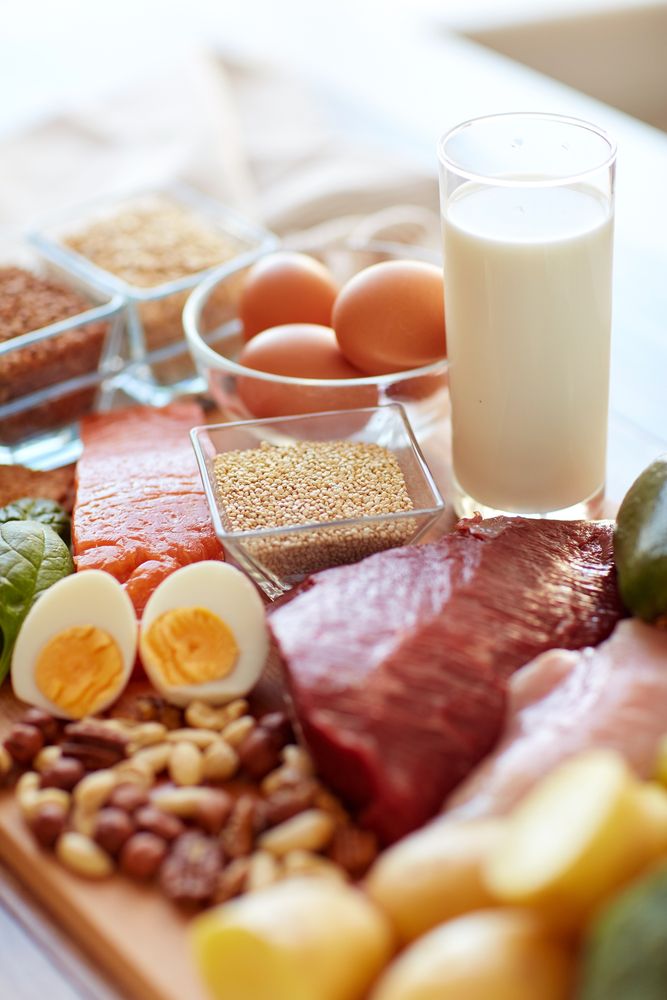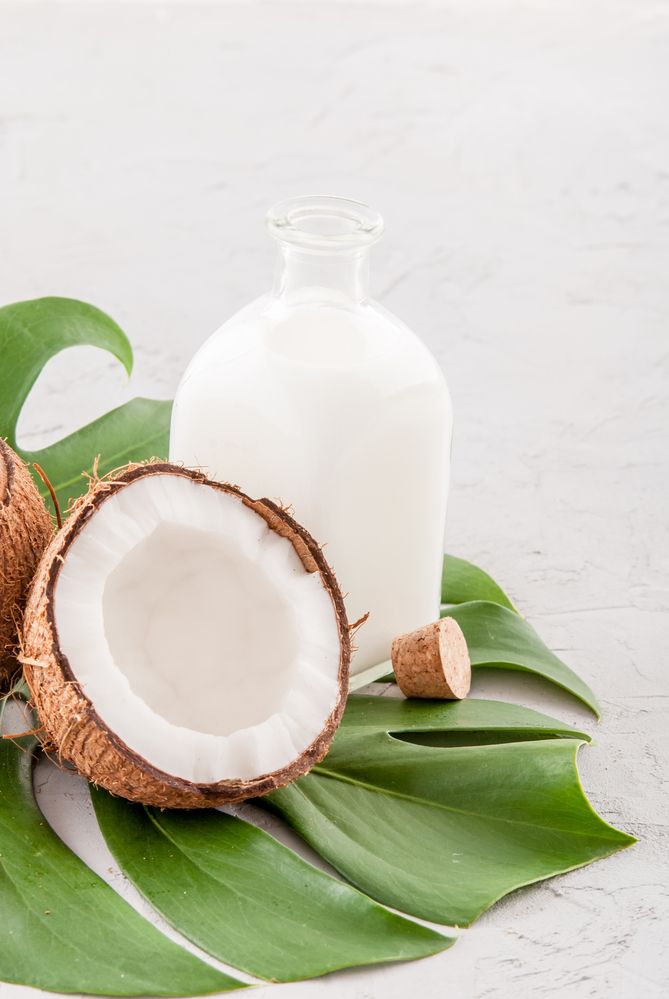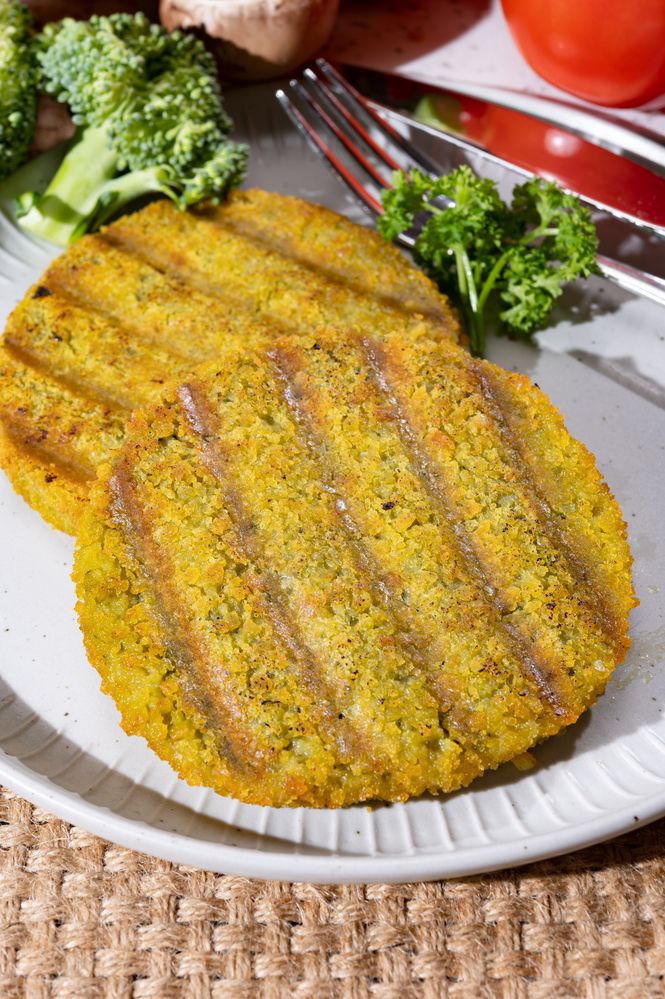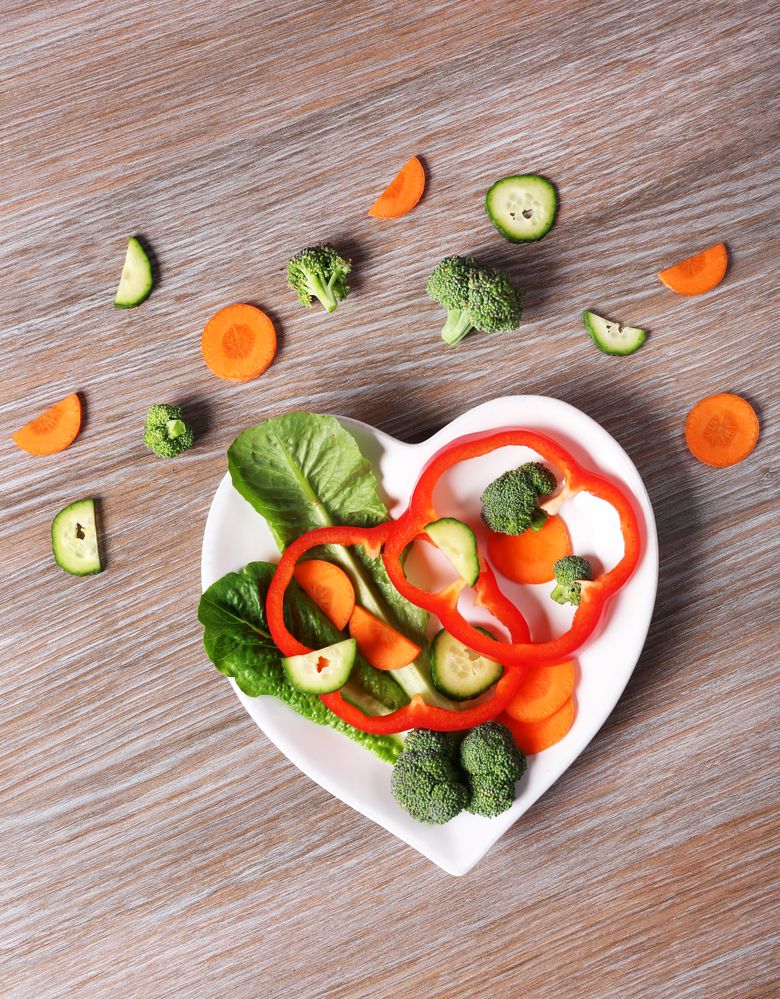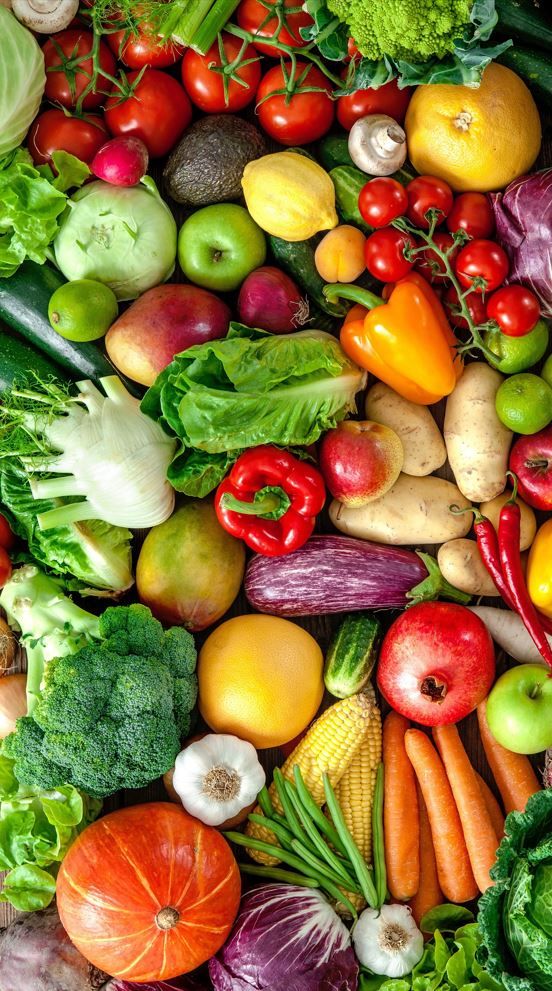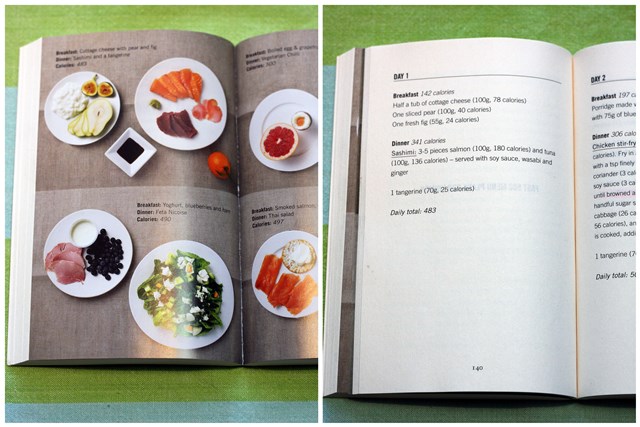Book review: The Fast Diet
Written by Catherine Saxelby
on Wednesday, 27 March 2013.
Tagged: Calories, diet meals, dieting, diets, fads, fat loss, healthy cooking, healthy eating, healthy lifestyle, hunger, longevity, low GI, portion size, protein, review, salad, vegetables, weight loss

The Fast Diet by Dr Michael Mosley and Mimi Spencer
I recently happened to watch dietitian Matt O’Neill comment on the new Fast Diet (aka the 5:2 Diet) on morning TV. It caught my attention not only for Matt’s usual easy-to-grasp explanation but also for the book’s simplicity and lack of a set ‘diet formula’. So when I received a copy in the post, I thought it was time for a review.
I hate the title
First things first, please ignore the ridiculous title The Fast Diet. The marketing department have thought this one up – pair the word 'diet' with the word 'fast' and you've got a winner! With a clever play on the double meaning of the word 'fast'.
Losing weight FAST is such a tempting promise to overweight people who are seeking a quick solution to what's really a long-term problem. The Fast Diet implies that weight loss will be quick and easy. Well it's not. Just watch the Biggest Loser TV series and you'll see how hard those contestants work every day to shed their excess weight [read my post here].
Intermittent fasting
A more correct name would have been the Intermittent Fasting Plan or else the original 5:2 Diet. However, even this latter one is not quite right – it promotes the five days of normal eating rather than the two days of semi-fasting. If you're being realistic, it should be called The 2:5 Diet so you know you have to plan for two days of strict eating and five days of normal eating.
Here's how the Fast Diet works
It's dead simple. On two non-consecutive days each week, you eat little, cutting your calories to only a quarter of your usual intake which is roughly 2000 kilojoules (500 calories) for women and 2400 kilojoules (600 calories) for men.
Say you fast each Monday and Thursday. These two days on the semi-fast are a form of intermittent fasting. I recall a similar diet from the 1980s known as the Day On, Day Off Diet. And there's an Alternate Day Diet too.
You can distribute your intake in any way – Michael likes to have a breakfast and dinner so he fits in two 12-hour fasts yet gets to eat with the family. Mimi prefers to eat a lighter breakfast and dinner so she can have a couple of snacks to help her overcome hunger over the day. Very wise.
To fill you up, there's lots of mineral water, tea, black coffee, raw veges etc., just to get over the hunger pangs.
On the remaining five days, the authors say you eat what you like but really you have to eat a semi-balanced diet so as not to put on the weight you just took off. However this allows you to dine out, enjoy the odd piece of cake, or eat junk food, something that's banned on regular diets. The authors say you forget about fasting and just live normally which does have huge appeal.
Best part – the diet doesn't last forever!
What foods?
On your fast days, you select foods that will satisfy you for the least number of calories. I hope this doesn't encourage obsessive calorie counting. The authors suggest this is protein (fish, lean meat, chicken, tofu) and low GI carbs (pasta, legumes, oats, low-fat dairy). Alcohol is out completely on the fast days.
Who would the 5:2 Diet suit?
- Anyone like me who hates formal diets with their prescribed meal plans.
- Busy people who want to slip in a "light" day.
- Anyone who can't stick to a set diet
- Foodies and chefs who need to cut back so they can eat big on other days.
The 5:2 Diet isn't a magic bullet. You still need to do:
- some sort of exercise whether gym, walking fast or swimming so you huff and puff
- eliminate or cut back on alcohol on all days
- be sensible on the five days and not binge to make up for the diet day before. It's been called the Feast and Famine Diet for this reason!
What 500 calories looks like
500 calories or 2000 kilojoules is NOT a lot of food. Expect to be hungry. You have to set your mind to thinking it's only for ONE day and live a day at a time. Use salads and non-starchy vegetables and diet drinks to fill yourself up for negligible kilojoules.Here's what the book suggests for Day 1 for a woman on 500 calories:
Breakfast 142 calories:
Half a tub cottage cheese 100 g
One sliced pear 100 g
One fresh fig
Dinner 341 calories
Sashimi made with 3-5 pieces salmon 100 g and tuna 100 g served with soy sauce, wasabi and ginger.
1 tangerine (mandarin)
Total for day 483
The downsides of the 5:2 Diet
- It won't suit everyone, especially if you're cooking for a family and want to share the same meal together.
- It doesn't teach you how to eat long term nor how to re-train your taste buds.
- It encourages starve-and-binge habits which we all know can have serious consequences in young women.
- It's not for anyone with diabetes who needs to eat regularly or who is pregnant. Definitely not for children.
What else is in the book?
- There are 10 menu plans of 500 calories for women and 10 plans of 600 calories for men. This is accompanied by 10 pages of colour pictures (the only pictures in the book). These shots are the highlight of the book for me – I bet most people will just copy the meals for their fast days!
There are only two meals pictured for each day - one is a breakfast and the second is a dinner meal.
- Basically breakfast is some type of egg/cheese/yoghurt. Dinner has a substantial salad with heaps of leaves or a plate of non-starchy vegetables plus some protein – salmon, tuna, lean meat. Examples are Chicken stir-fry (with 140 g of chicken), Vegetarian Chili (100 g kidney beans), Thai salad with 30g prawns, and Tuna, bean and garlic salad (120 g can tuna).
- There are 20 pages of testimonials and tweets from satisfied patients.
- The book finishes with the usual list of research papers from journals.
Who are the authors?
Neither have qualifications in nutrition or dietetics.
Michael Mosley is a UK medical journalist, producer and TV presenter. His Horizon Programme Eat, Fast, Live Longer had a phenomenal global response when it was broadcast on BBC Two in 2012. He lost weight and created this 5:2 approach after reading all the literature on intermittent fasting.
Mimi Spencer is a journalist and feature-writer for newspapers and magazines including the Mail, the Evening Standard, Marie Claire, Harper's Bazaar. She is the author of 101 Things To Do Before You Diet (Transworld 2010). She made Michael's personal diet regime more practical with menu plans and charts and adapted it for women.
The bottom line
The fast days are spartan and anti-carb with almost no grains and few oils or fats. However, they are a way to minimise your intake and not a way of eating for life. Like the Calorie Restriction philosophy to extend lifespan, however, your meals are packed with vegetables, salads and fruit so you'll get a high intake of vitamins, minerals and antioxidants but you will be hungry.
It won't suit everybody nor does it teach you good nutrition but many people already cut out eating after a big night out or "save up" for a dinner out by not eating at all during the day. And many follow religious fasts such as Lent or Ramadan.
As a way to dial back your intake and simply eat less, it's quite bearable because it's only for two days. Can you follow such a regime long term? I'd love to hear any feedback if you've tried it.
The book is nicely written, easy to read, with a warm friendly tone that switches from Michael's to Mimi's perspective. I liked the 10 days of meals. Helpful and realistic.
The Fast Diet is published by Allen and Unwin for $19.99 and is available here.
Reviews
-
Read more
Product review: Low-sugar alcoholic ginger beer
1 March 2023 by, Catherine Saxelby
Want something to drink before dinner? Something that’s LOWER in alcohol than wine? To match his beer? Then look no further than Bundaberg’s low-sugar alcoholic ginger beer.
You can drink Bundaberg low-sugar ginger beer straight from the can, or pour it into a long glass over ice with a slice of lime.
-
Product snapshot: Berkelo’s Khorasan Macaroni
14 September 2022 by, Catherine Saxelby
I’m loving this macaroni from Berkelo. I was sent a sample for Whole Grain Week 2022 by the Grains Legume Nutrition Council. I cooked it up and found that it was just divine! Read on for more …
-
Product review: Super high-oleic safflower oil
11 May 2022 by, Catherine Saxelby
“What does super high-oleic mean?” I hear you ask. Also, “I haven’t heard of safflower for ages. What’s the deal?” Read on and all will be explained.
-
Product review: Healthy Life Food Tracker
6 April 2022 by, Catherine Saxelby
When I was first asked to write this review, I thought, Not another tracker.
After all, there have been several in recent years, such as My Fitness Pal and Everyday Diet Diary. But this one is different. It works by using your Everyday Rewards card AND your shop at Woolworths.
-
20 October 2021 by, Catherine Saxelby
With home delivery on the rise, this post is reviewing none other than that stalwart Lite n’ Easy. We all know their meals are good for weight loss (which we all need after COVID-19!), but did you know they’re also good for general health and wellbeing ? Eating well to nourish yourself – putting your mental health and wellbeing at the forefront – is gaining momentum. Lite n’ Easy meals also ensures you satisfy your need for vitamins, minerals, fibre and phyto-compounds, such as sterols and carotenoids.
 This post has been sponsored by Lite n' Easy.
This post has been sponsored by Lite n' Easy. -
Product review: Birds Eye Plant Based range
15 September 2021 by, Catherine Saxelby
When you think of Birds Eye, their frozen peas and fish fingers probably come to mind. But I bet you’d never think of plant-based products!
 This post has been sponsored by Birds Eye.
This post has been sponsored by Birds Eye. -
Product Snapshot: Olina’s Snackers Crackers
2 June 2021 by, Catherine Saxelby
We sampled Olina’s latest offering in the seeded cracker range – called Olina’s Bakehouse Seriously Seedy Snackers (which is a great name BTW). They come in four flavours: Barbecue, Chilli & Lime, Beetroot & Sour Cream, and Balsamic Vinegar & Caramelised Onion. Take a look at our verdict.
Healthy Weight Loss
-
Read more
Intermittent fasting vs daily calorie restriction
3 May 2023 by, Catherine Saxelby
As you probably know already, intermittent fasting (IF) has gained favour as an alternative regimen to daily caloric restriction (DCR). Fasting is shown to extend the lifespan of rats, and has been associated with metabolic benefits in humans, yet the results so far have been inconsistent. So, which regimen is best for healthy weight loss?
-
15 March 2023 by, Catherine Saxelby
What sort of a diet should you follow to lose that excess weight? These days, it’s pretty confusing with high-protein Keto advocates clashing with plant-protein followers … as well as intermittent fasters, juice-only dieters, no-carb dieters and no-animal (aka plant-based) dieters. Plus all the ads for anti-hunger supplements, meal-replacement shakes and home-delivered meals, more of which somehow appear every day. So, what sort of diet should YOU follow to lose that excess?
-
Protein shakes for weight loss
9 November 2022 by, Catherine Saxelby
These days, protein shakes aren’t bought by just body builders – they’re so popular that you can readily buy a 400 g tub at your local supermarket or service station. And with tempting claims such as ‘Facilitates muscle toning’, ‘Contains transformation-making protein’ and ‘Tastes incredible, mixes easily’, why wouldn’t you grab one? But protein shakes aren’t the magic answer to all your weight-loss woes. Let’s take a look at what you get for your money.
Guest post by dietitian Zoe Wilson APD
-
20 January 2021 by, Catherine Saxelby
Many of us have cravings from time to time and for different reasons. One thing is certain, they can sabotage all your best efforts at a healthy diet and/or weight loss. The good news? You CAN beat them. I’ll tell you how.
-
How to lose weight WITHOUT going on a diet
14 October 2020 by, Catherine Saxelby
The word 'diet' is a turn-off for most people. It sounds hard, unpleasant and unpalatable. Losing weight doesn’t have to be hard AND it doesn’t have mean sticking to a 'diet'. You can forget Paleo, Keto, Vegan and Raw, Gluten-free and Intermittent Fasting. To lose weight, you don’t have to follow any specific diet. What you need is simple, healthy, nutritious food and a few tips and tricks.
-
What IS a healthy balanced diet for weight loss?
16 September 2020 by, Catherine Saxelby
Healthy weight loss happens when you lose weight slowly and steadily (around 1 kg or 2 pounds weight loss a week). Your goal is to lose weight while still getting your essential nutrients but from smaller portions. You certainly don’t want to be tired with no energy! That’s why you need regular healthy meals and snacks on hand to ensure your vitamins, minerals, omega-3s and fibre needs can be easily met. There is a new range of healthy weight loss meals available and it’s one that I’d like to recommend. With these ready meals, you’ll say goodbye to meal planning, shopping, meal preparation and cooking.
This post is sponsored by Chefgood
-
Kitchen make-over for the New Year
8 January 2020 by, Catherine Saxelby
“This year, I'm going to lose weight!”, or “This year I’m opting for a healthier lifestyle!” Is your 2020 New Year's resolution something like one of these? If so, how is it going to happen?
Most popular
-
Read more
Q. What's the difference between Diet Coke and Coke Zero?
12 September 2013 by, Catherine Saxelby
A. At first glance, Diet Coke and Coke Zero appear to be identical. Both contain no kilojoules (Calories) and no sugar. Both are artificially sweetened with (the same amount) of aspartame and acesulfame K and therefore have the same ‘sweetness’.
-
How to convert sodium to salt (and salt to sodium)
6 August 2010 by, Catherine Saxelby
As a nutritionist, my aim is to help busy women eat healthily. One of the ways to do this is to follow the general nutrition advice to reduce the salt in your diet. So, how can you do this when what you’ll see on a food label and on any recommended daily intakes is sodium?
-
7 types of sugar - which is healthier?
11 December 2013 by, Catherine Saxelby
Last week on the radio, the announcer asked me if there was a 'good' sugar – one that would satisfy her sweet tooth but that was 'healthier' than regular white sugar. She figured if there were 'good' carbs and 'bad' carbs there must be some sugars that would get the nod of approval from nutritionists.
-
Eat to beat gastro and diarrhoea
12 October 2012 by, Catherine Saxelby
A clear fluid diet is the best form of treatment for gastro and tummy upsets. It is the "lightest" type of diet, designed to place as little strain as possible on the digestive tract. It is NOT nutritionally adequate and should be followed only for a strictly limited time e.g. two or three days but no more than a week.
-
Nutella. The full (correct) list of ingredients
12 April 2011 by, Catherine Saxelby
Have you ever tried to find the exact list of ingredients for Nutella online? The identical one that appears on its label - in descending order from the first (largest ingredient by weight) to the last ingredient, as required by law? Well, you won’t find it! Here’s the hoop-la I went through to discover exactly what the ingredients in Nutella are and why Nutella is not good for your kids.
-
Sugar - why quitting sugar guarantees you'll lose weight
6 May 2013 by, Catherine Saxelby
Sugar. It's been labelled "deadly", "addictive", "toxic", "sweet poison" and blamed for the rise in global obesity in recent years." Get rid of the white toxin from your diet and you'll free up your body to drop those excess kilos" (or so say anti-sugar campaigners Sarah Wilson, David Gillespie and Robert Lustig). Here are the three real reasons why I believe quitting sugar helps you lose weight.
-
What does 8,700 kilojoules look like?
14 August 2012 by, Catherine Saxelby
8,700 is a magic number in nutrition. It’s the number of kilojoules (kJ) that is the “average” intake for adults in Australia, if the surveys are correct.
It’s widely used as a benchmark figure and as the basis of food labels such as the Percent Daily Intake values.
Recently kilojoules have appeared on fast food menu boards and they use 8,700 as the yardstick to assess their foods against. Here's my take on it.
Recipes
-
Read more
24 May 2023 by, Catherine Saxelby
This is a kind of pavlova topped with fruit, but the base is made from ricotta, rather than egg whites and sugar.
-
22 March 2023 by, Catherine Saxelby
This is an Asian-influenced salad that’s perfect to serve as a side salad at a BBQ or with a fillet of fish.
-
14 December 2022 by, Guest Post
This banana loaf is half bread and half cake. Hence I've called it "cread" which is halfway! It’s dense and delicious without being super-sweet or oily. It can be enjoyed fresh, toasted or sliced and frozen into portions to enjoy later.
-
23 November 2022 by, Guest Post
This quick and easy dessert is ready in minutes. And there are NO leftovers to tempt you later!
-
19 October 2022 by, Catherine Saxelby
A quick and easily-made sandwich, it’s great for an easy lunch.
-
Spring Vegetable Pesto Pasta Salad
7 September 2022 by, Guest post
This super salad-in-one gives you pasta plus vegetables all together. It has a spring feel to it.
-
Squash-ed spaghetti bolognaise
3 August 2022 by, Guest post
This is an excellent make-and-freeze recipe, so weeknight meals become more manageable. I know of no better way of ‘hiding’ veggies than in a Bol sauce – somehow mince with a few veggies like pumpkin or zucchini is a match-made-in-heaven.
Foodwatch
The Good Stuff
The Boring Stuff
© 2025 Foodwatch Australia. All rights reserved
Website by Joomstore eCommerce

